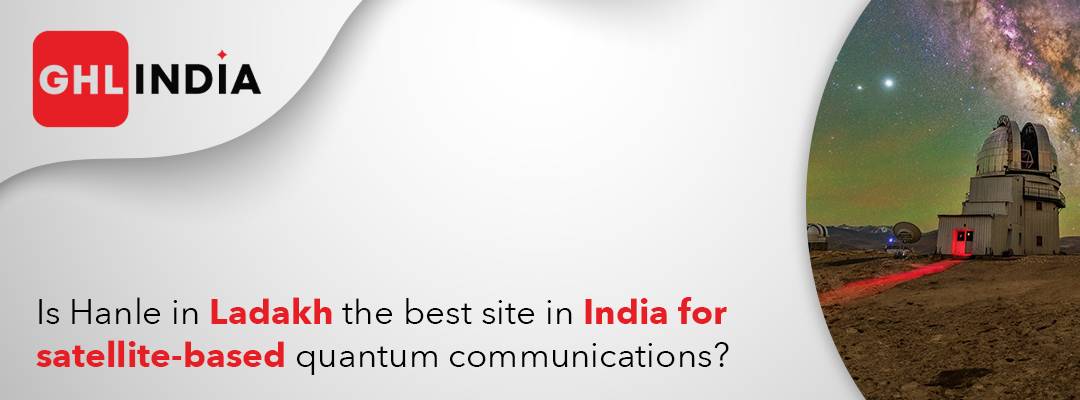
Summary:
Scientists from the Raman Research Institute (RRI) have selected the Indian Astronomical Observatory (IAO) in Hanle, Ladakh, as India's best location for satellite-based quantum communications. The study examined meteorological data from Hanle, Mt. Abu (Rajasthan), and ARIES, Nainital (Uttarakhand), emphasizing Hanle's cold desert environment, low atmospheric water vapor, and oxygen levels. These characteristics make it ideal for quantum key distribution (QKD) with minimal atmospheric distortion, enabling long-distance quantum signal transmission.
The study focused on transmitting quantum signals across Earth's atmosphere using beacon signals, telescope operations, and signal divergence control. For the primary signal, researchers used 370 THz (810 nm) wavelengths, which were magnified and detected using smaller telescopes. Hanle experienced the least signal loss (44dB), followed by Mt. Abu (47dB) and Nainital (48dB). These findings provide a universal framework for site selection and link-budget estimation, which is crucial for future quantum satellite programs aiming to secure communications via LEO satellites.
Source: IBEF
Disclaimer: The information on this website comes from the India Brand Equity Foundation (IBEF), a reliable source for thorough insights into numerous areas of the Indian economy. While we aim to offer accurate and up-to-date information, the views, opinions, and analyses stated herein are solely those of the authors and contributors and do not necessarily represent IBEF's official stance or position. Readers should check information from credible sources and use their own discretion when relying on content provided on this site. We assume no responsibility or liability for the supplied content, including its accuracy, completeness, and usefulness.
